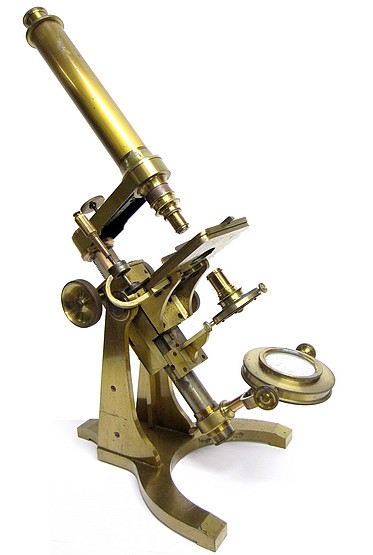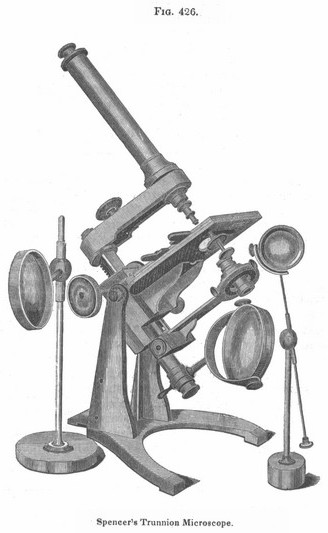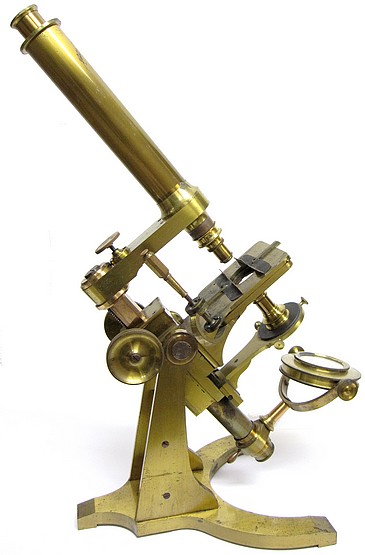
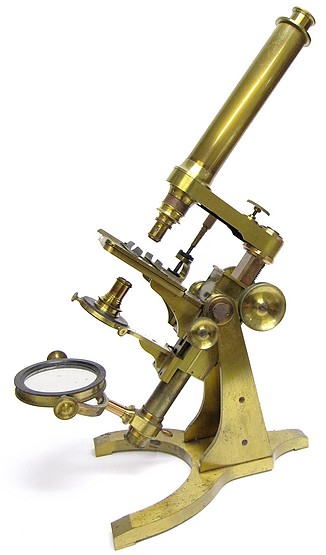
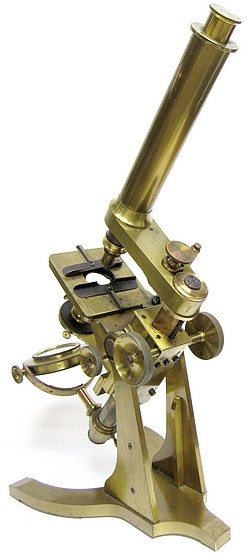
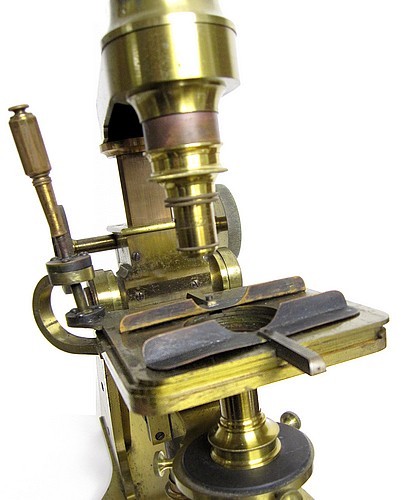
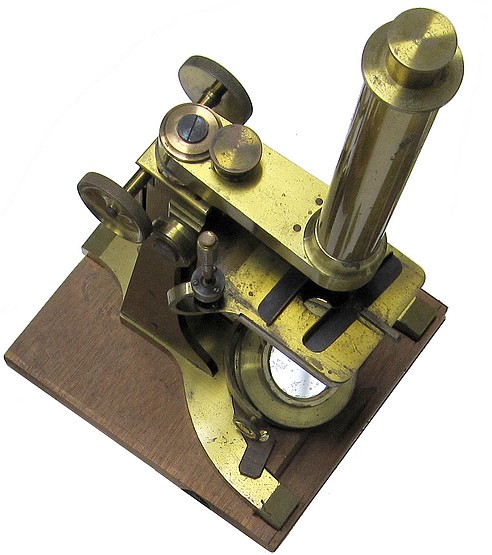
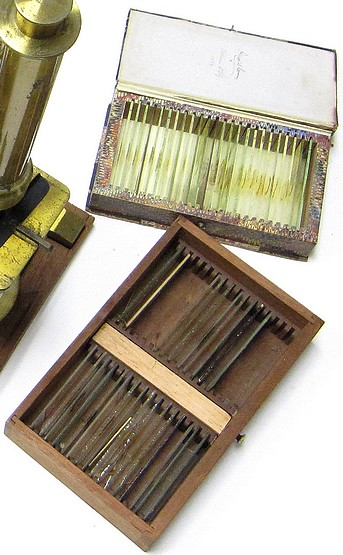
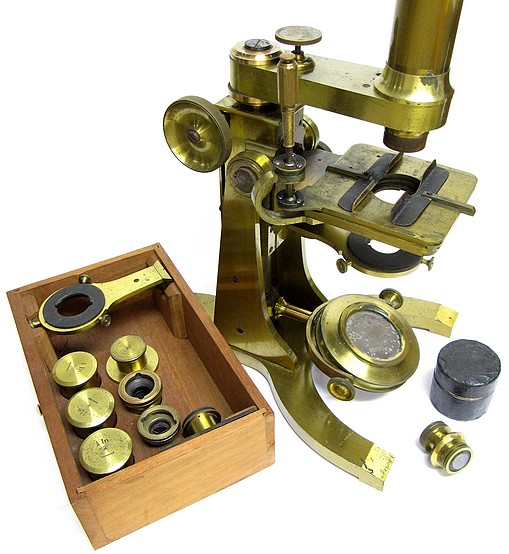
This is a fine example of
the first class large Trunnion model microscope made by
Charles A. Spencer (1813-1881) of Canastota New York.
While this microscope itself is unsigned, the objective
canisters are marked Spencer. This particular example
has a lever type mechanical stage. The instrument
illustrated in Carpenter and King shows the microscope
with a Turrell-type mechanical stage with the knobs
located under the stage. The bar-limb design of this
microscope borrows features first introduced by Andrew
Ross in 1843. C. A. Spencer was America's first
commercial manufacturer of microscopes. He began
production in the late 1830's. Around the time the
microscope shown here was produced, mid-19th century,
the firm traded under the name Spencer &
Eaton. By around 1865, the firm was known as C. A.
Spencer & Sons.
The storage case is
supplied with three drawers. The top drawer contains a
group of prepared slides, the middle drawer houses some
unmounted specimens and documents, and the bottom drawer
holds the accessories. Among the accessories are three
objectives with bayonet fittings having canisters
marked Spencer (1, 1 1/2, and 1/4 inch magnifications),
two eyepieces with dust caps, a substage polarizer in a rotating
mount, an analyzer that mounts above an objective, another
analyzer with rotation that mounts above the eyepiece (not shown), a
live box, a hand forceps, and knife. There are two separate
substages with centering adjustments where one is used
to hold an objective to serve as a condenser, while the
other is used to mount the polarizer or other larger
accessory. Also, there is an adapter that fits the
objectives allowing them to be used with microscopes
utilizing the RMS thread. The precise dating of this
microscope is uncertain, but since the RMS thread
standard was formalized in 1858, it is reasonable to
assume that the microscope was made at that time or
shortly thereafter. Accompanying the microscope is a
box containing additional prepared slides.
An additional example of Spencer's Trunnion model with a different type of stage is also represented in this collection.
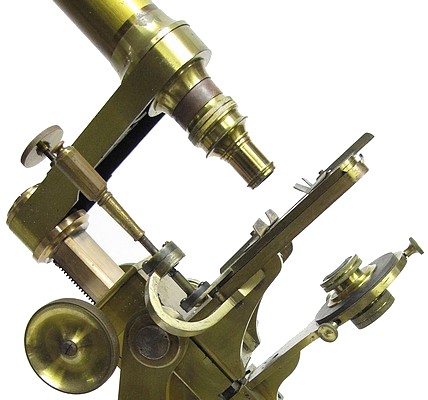
The microscope set up for polarization
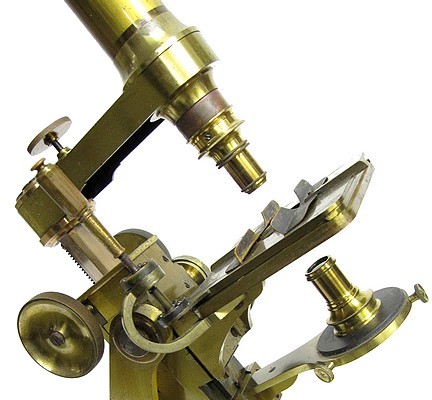
The microscope set up with an objective used as a condenser
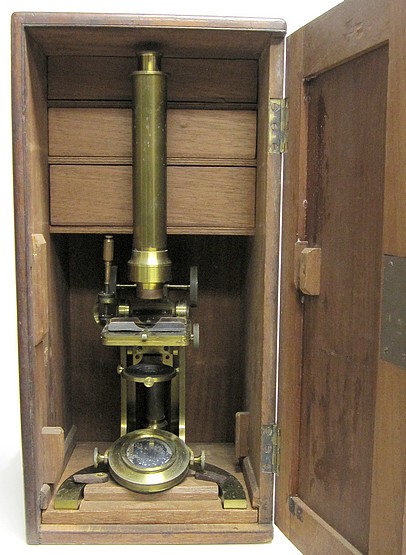
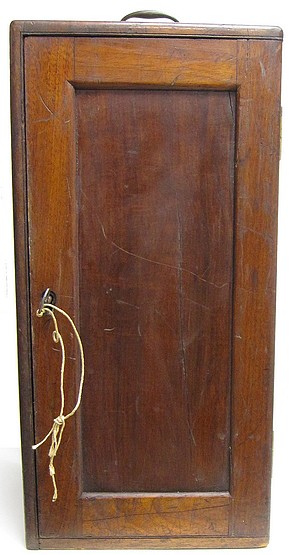
The following is from Carpenter's The
Microscope and its Revelations, first American
edition, 1855.
Mr. Charles A. Spencer of
Canastota, New York, has manufactured a microscope of
great excellence, the objectives of which will bear
comparison with the best of foreign construction. His
common angle of aperture for 1/4 inch objectives is 135
degrees; for 1/8 inch, 170 degress, and for 1/12 and
1/16 inch, 176 degrees. This. is believed to be the
largest angle ever given to an object-glass, and for
sharpness of definition and power of penetration, they
are unexcelled by any of foreign make.
Mr. Charles A. Spencer of
Canastota, New York, has manufactured a microscope of
great excellence, the objectives of which will bear
comparison with the best of foreign construction. His
common angle of aperture for 1/4 inch objectives is 135
degrees; for 1/8 inch, 170 degress, and for 1/12 and
1/16 inch, 176 degrees. This. is believed to be the
largest angle ever given to an object-glass, and for
sharpness of definition and power of penetration, they
are unexcelled by any of foreign make.
To Mr. Spencer is due the
credit of having first resolved, with lenses of his own
construction, the fine markings on the Navicular
Spencerii and Grammatophora Subtilissima: these minute
shells have since been adopted by microscopists as
test-objects for the highest powers. The Navicula
Spencerii, will exhibit one set of lines with Mr.
Spencer's 1/4 th-inch object-glass: both sets with the
1/8 th-inch. The Glrammatophora Subtilissima is a good
test for a 1/12 th or 1/16 th.
Of several microscopes
made by Mr. Spencer, two or three only will be here
noticed. His first-class or best instrument is mounted
on trunnions, and embraces all the acknowledged
improvements, in form and stage, whereby the greatest
steadiness and freedom from tremor are secured. The
price of this instrument with all the accessories and a
full set of object-glasses will approach $350 (Fig,
426)
The microscope was also
described in more detail in the book
The Microscopist's Companion by John King,
1859 where the following price list was taken:
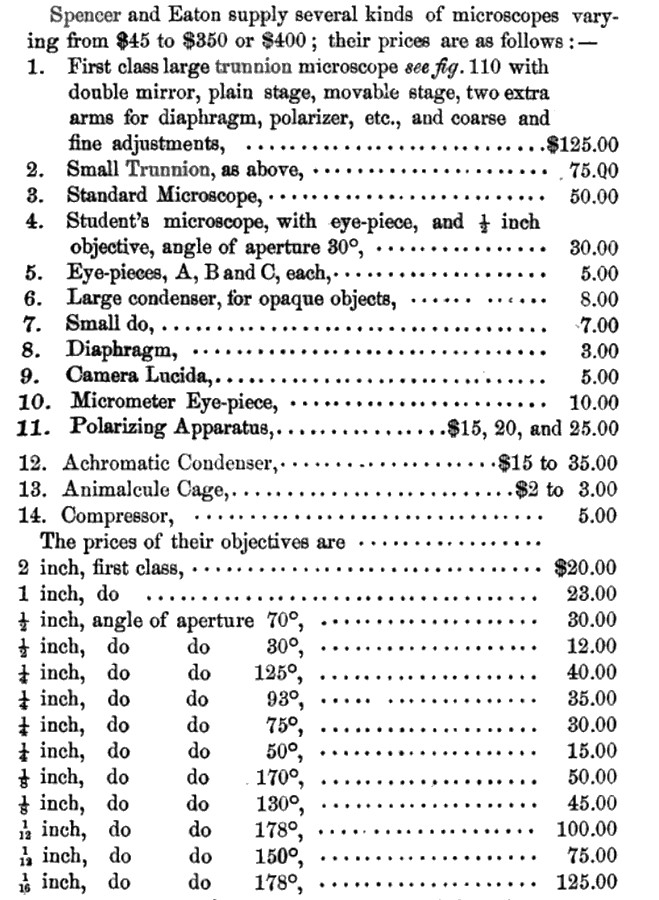
To get an indication of the rarity of this microscope see: An Early American Microscope in the Proceedings of the American Microscopical Society, vol. 14, No. 3, Fifteenth Annual Meeting. Part III (Jul., 1893), pp. 156-158
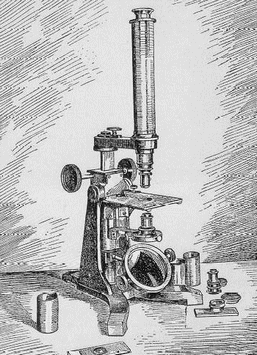
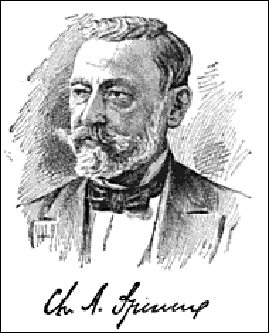
The following was extracted from The National Cyclopedia of American Biography, vol. XIII, 1906.
SPENCER, Charles
Achilles,
lensmaker, was born at Lenox, Madison co., N. Y., Sept.
13, 1813, son of Gen. Ichabod Smith and Mary (Pierson)
Spencer, and a descendant of Thomas Spencer, the first
of the family in America. The line is traced through
Thomas's son Thomas, through his son Samuel, his son
Thomas, his son Eliphalet, and his son Eliphalet, the
father of Ichabod Smith Spencer. The last named was an
officer in the war of 1812. The son was educated at
Cazenovia Academy, Hobart College, and Hamilton
College. He displayed his natural aptitude at a very
early age, making his own optical glass when only
twelve years old. In 1838 he announced himself as a
manufacturer of telescopes and microscopes, locating
his workshop at Canastota, N. Y., and here, in spite of
busmess reversals he continued to devote himself to the
perfection of the achromatic telescope and microscope,
later becoming the pioneer in developing the
possibilities of lensmakmg as applied to the
microscope. Ten years later (1848) there issued from
this little shop at Canastota lenses that mystified
both English and French microscopists, chiefly because
of their great resolving power. He had succeeded in
making the microscope objectives so effective as to
accomplish results in " definition " before unknown,
surpassing the efforts of the best European opticians
and upsetting their claim that they had obtained the
largest angular pencil of light that could be passed
through a microscope object glass. He had proved by
actual construction that the angle of aperture in these
higher power objectives could be greatly increased, and
with it their defining and resolving powers. The
English makers charged Mr. Spencer with the I knowledge
of some mode of working glass as yet unknown to other
opticians, and while this was partly true, his chief
success was due to his tact in figuring the lenses so
as to balance the aberrations, a process so delicate
that it would have availed no one not possessed of the
same skill to copy curves. From this time forward Mr.
Spencer kept steadily in advance of foreign opticians
as to angle of aperture; and his microscopical
objectives were pronounced the best in the world. In
the fall of 1873 a disastrous fire broke out in
Canastota, destroying his shop with nearly all his
tools and machinery (the accumulation of many years),
together with a large amount of finished and unfinished
work. Crippled, but not disheartened, he continued his
work under difficulties, and in 1875 entered the employ
of the Geneva Optical Works, Geneva, N. Y., where he
worked for two years. During 1854-56 his business was
conducted under the firm name of Spencer & Eaton,
his partner being A. K. Eaton, and in 1877 he started
the firm of C. A. Spencer & Sons, with his sons
Herbert R. and Clarence Leslie Spencer, and Major O. T.
May, his son-in-law. This association lasted for three
years, when the health of Mr. Spencer, Sr., failed to
such an extent that he gave up active work. On Aug. 10,
1881, Charles A. Spencer was elected one of the first
honorary members of the American Society of
Microscopists. He was married July 10, 1838, to Mary
Morris, daughter of Lonson and Hannah Stilwell, of
Manlius, N. Y., and had six children. He died at
Geneva, N. Y., Sept. 28, 1881.
For an additional discussion of the life and work of
Charles A. Spencer (1813-1881), America's first
microscope maker, see
Three American Microscope
Builders published by the American
Optical Company 1945. An additional biography of Charles Spencer was published in the Proceedings of the American Society of Microscopists, Vol. 4, Fifth Annual Meeting (1882), pp. 49-74.
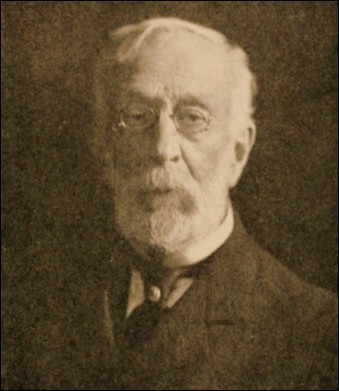
William Davis Ely (1815-1908)
Among the documents
found in the storage case was
a letter addressed to "Wm D. Ely Esq, No. 668
North Main St., Hartford Conn". On the
inside cover of the box of slides is
a note stating that the slides were given to William
Ely in 1873. It is therefore reasonable to assume
that this microscope was the property of Mr. Ely. At
the time this microscope was made, c. 1859, there was
a prominent lawyer living in Hartford with that
name.
William Davis Ely
(1815-1908) studied at Yale college taking courses in
the Divinity and Medical schools after which he
became a tutor of Natural Philosophy at the college
while studying for a degree in law. He practiced law
in Hartford and later moved to Providence RI where he
spent his time overseeing the construction railroads
throughout the North East and was also engaged in the
cotton business producing yarns (among the specimens
stored in the drawer of the case are various samples of
cotton fabric). The Yale University Library retains
an archive of some of the William D. Ely papers;
A biographical sketch is available
online.
